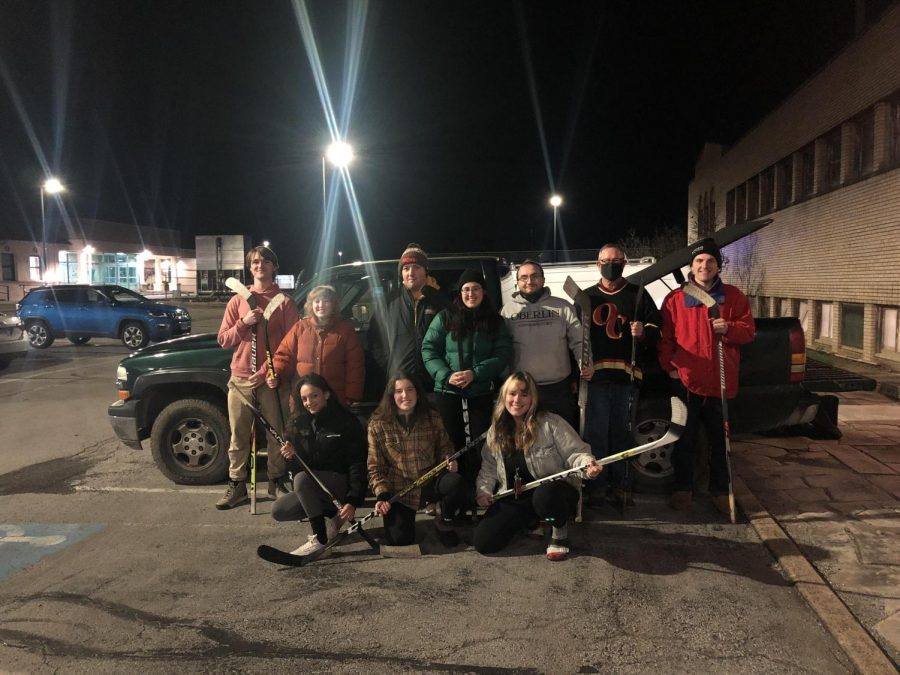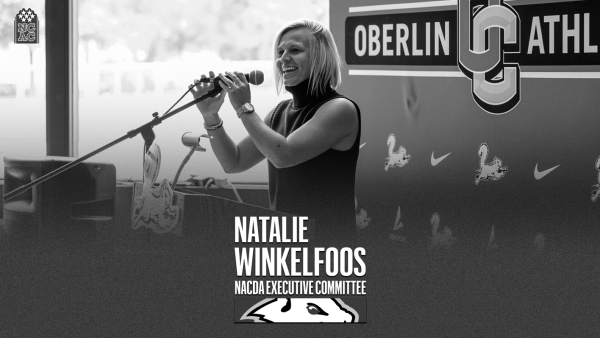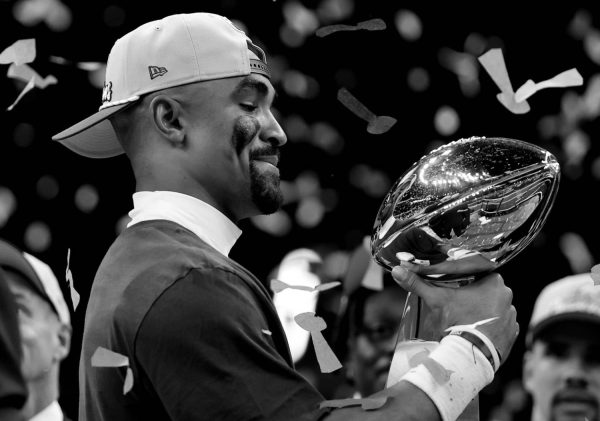The Plague Takes the Ice, Restoring Oberlin Ice Hockey Tradition
Oberlin’s club hockey team, the Plague, poses with its sticks.
Oberlin’s club hockey team, The Plague, returned to the ice for the first time in nearly two years this past Sunday, restarting a tradition of Oberlin College ice hockey. The Plague, which plays with non-checking rules, competed against a non-checking men’s team consisting of players mostly from the Cleveland metro area at North Park Ice Arena in Elyria. There was no official score due to referee shortages across local hockey leagues, but there were several standouts for The Plague on both offense and defense.
Fourth-year Kiernan Stone and second-year Joe Strabley led the team on offense while fourth-year Colin Regan shined on defense. Conservatory graduate student Nick Schrantz was strong in goal. Defensive player Cortland Hill, OC ’77, was impressed with the first-time players, although he was anxious about how they would do against the competitive squad they were facing.
“I was concerned about how the game was going to go with our brand-new players out there, but it went beautifully,” Hill said. “The game was a lot of fun — very competitive — and I think everyone had a good time. I was so pleased with how good the new players were.”
Regan, who has an extensive background in playing and coaching hockey, was also impressed with the less experienced players who he taught prior to their first game.
“The thing I was proudest of the new players for was their eagerness to embrace failure,” Regan said. “None of them got discouraged when they made mistakes or fell down. They just got back up and tried again. I would say they all worked really hard and pushed themselves.”
For first-year Ember Carerra, Sunday’s competition was her first ice hockey game ever, though she is not new to ice sports. Carerra competed as a figure skater from third grade through high school and was a part of a gold medal team at the Open Juvenile division at the 2020 Eastern Synchronized Sectional Championships. Still, the transition to hockey presented some challenges.
“When I first stepped on the ice with my hockey skates, I was so disoriented,” Carerra said. “Hockey skates support the foot differently than figure skates, and the distance between the inside and outside edges is larger. However on the whole, the skating aspect is very similar. The most difficult transition has been incorporating stick handling. Being aware of the puck and the stick have been quite challenging, but the challenge is what makes this experience so exciting.”
Carerra also noticed some non-skating similarities between hockey and figure skating during Sunday’s game.
“Learning the logistical aspects of what it means to be on defense was interesting for me, who came from a highly choreographed discipline,” Carerra said. “I am just so glad I get to keep skating.”
Carerra is not the first member of The Plague to switch from a different ice sport to hockey while playing for Oberlin. Laurence Ducker, OC ’13, competed in the 2010 speed skating Olympic Trials but turned to hockey once he realized that attending college while training for Olympic-level speed skating was not sustainable. Ducker wrote to The Plague alumni about the cross-over and challenges between speed skating and hockey while he was on the team.
“It has been fun to struggle alongside other new players, learning to turn right and to brave trying to go backwards sometimes,” Ducker wrote. “The challenge of rounding out my skating has kept me coming back for more hockey.”
It is not just other skating sports that have similarities to ice hockey. Regan, who plays on Oberlin’s lacrosse team, recognizes some crossover between his two sports.
“The biggest thing that carries over is the hand-eye coordination,” Regan said. “I also feel like my instincts and anticipation skills are very reciprocal between the two sports. The physicality also definitely carries over.”
Sunday’s game was key to restoring the culture of the team, which tries to advocate for anyone who wants to play the game. Historically, all different types of students and faculty have played on the team.
Hill is an example of someone with a unique background, having played for Oberlin’s short-lived varsity ice hockey team in the ’70s before coming back to play with The Plague in 2003 when he became the faculty advisor for the team. Schrantz went to Florida State University for his undergraduate degree but came to Oberlin to work on two graduate degrees from the Conservatory.
The Plague has also featured guest players. Better Call Saul actor Bob Odenkirk played a game for the team in 2017 during a brief stay with Hill when his son attended the College.
The 2021–22 Plague squad looks to continue to unify the Oberlin community through ice hockey. In the spring, the team will host the team’s alumni weekend from March 4–6 with the alumni game set for March 5.








